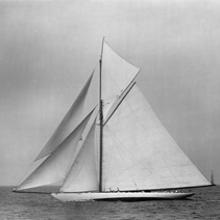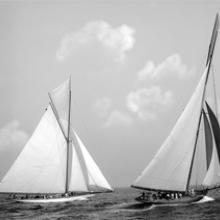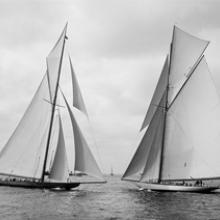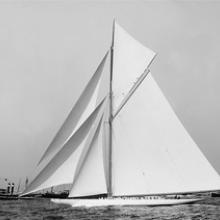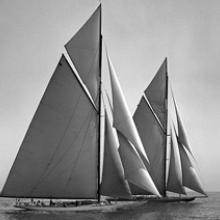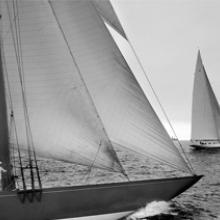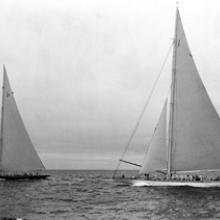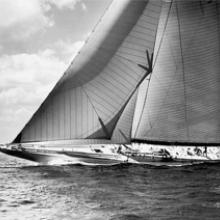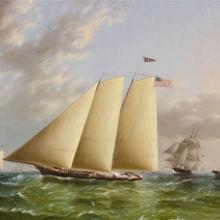America’s Cup: Sailing for International Sport’s Greatest Trophy 1851–1937
America’s Cup: Sailing for International Sport’s Greatest Trophy 1851–1937
In the waning light of the evening on August 22, 1851, after more than ten-and-a-half hours at sea, a radical looking black-hulled schooner with steeply raked masts sailed into the port of Cowes on England’s Isle of Wight and into history as the fastest yacht in the world. The aptly named America, representing the New York Yacht Club, and more symbolically, the United States, had just defeated fifteen of the Royal Yacht Squadron’s fastest yachts in a fifty-three-nautical-mile race around the island. Her stunning victory unseated Britain as the world’s undisputed maritime power and announced the young country’s arrival as a leader of yacht design and racing.
America’s owners unsentimentally sold her for a profit to an English nobleman just ten days later, but they returned to New York with the contest’s prize—a rather ordinary silver trophy the Royal Yacht Squadron dubbed “the Hundred-Sovereign Cup.” The trophy was promptly renamed “America’s Cup” to honor the victorious schooner, and was deeded to the New York Yacht Club to be held as “a perpetual challenge cup for friendly competition between nations.”
The America’s Cup competition immediately became much more than a mere contest between the world’s fastest yachts. Victories brought participants fame and glory, while defeats often resulted in national shame and unspeakable heartbreak. America’s Cup history has been written by the world’s wealthiest and most powerful men funding and managing Cup campaigns; brilliant designers unveiling creations that confounded contemporaries while making quantum leaps in yachting technology; and daring helmsmen who, with guile and skill, pushed these extraordinary yachts to the limits of their capacities in their quests to win the Cup.
Those who flocked to see Harold Vanderbilt’s Ranger beat back the latest British challenge during the Cup’s sixteenth defense in the waters off Newport, Rhode Island, in 1937 unwittingly witnessed the end of an era. Within a few years, Ranger and most of the other racing yachts built in her class would be scrapped for use in a far more meaningful campaign. The Second World War and its aftermath resulted in a nearly two-decades long interruption in the contest. When racing finally resumed, a new Deed of Rules stipulated far smaller boats of a newly implemented twelve-meter class.
This exhibition focuses on the first eighty-six years of the competition, a colorful history that includes enormous spectator fleets of steamships with more than 60,000 people jamming the New York Harbor racecourse; a five-time challenger from Britain whose personal charm and sportsmanship earned the affection and rooting interest of Americans; and a boat-builder from Bristol, Rhode Island whose audacious designs were so successful, they threatened to end meaningful competition among racing yachts.
America’s Cup racing continues and is once again contested in yachts considered extreme in both size and expense. And in an interesting twist, they now feature the multi-hull designs that were immediately prohibited upon their introduction in 1876. But the grace and beauty of the majestic 100-foot vessels that sailed to glory under immense clouds of sail, with hulls slicing effortlessly through the seas, remains unmatched. The awe they inspired among both participants and spectators is unlikely to be repeated.
Special thanks to historian John Rousmaniere and to our colleagues at the Herreshoff Marine Museum and America’s Cup Hall of Fame, Bristol, Rhode Island; the Mariners’ Museum, Newport News, Virginia; and Mystic Seaport: Museum of America and the Sea, Mystic, Connecticut.
©2013 by San Francisco Airport Commission. All rights reserved.
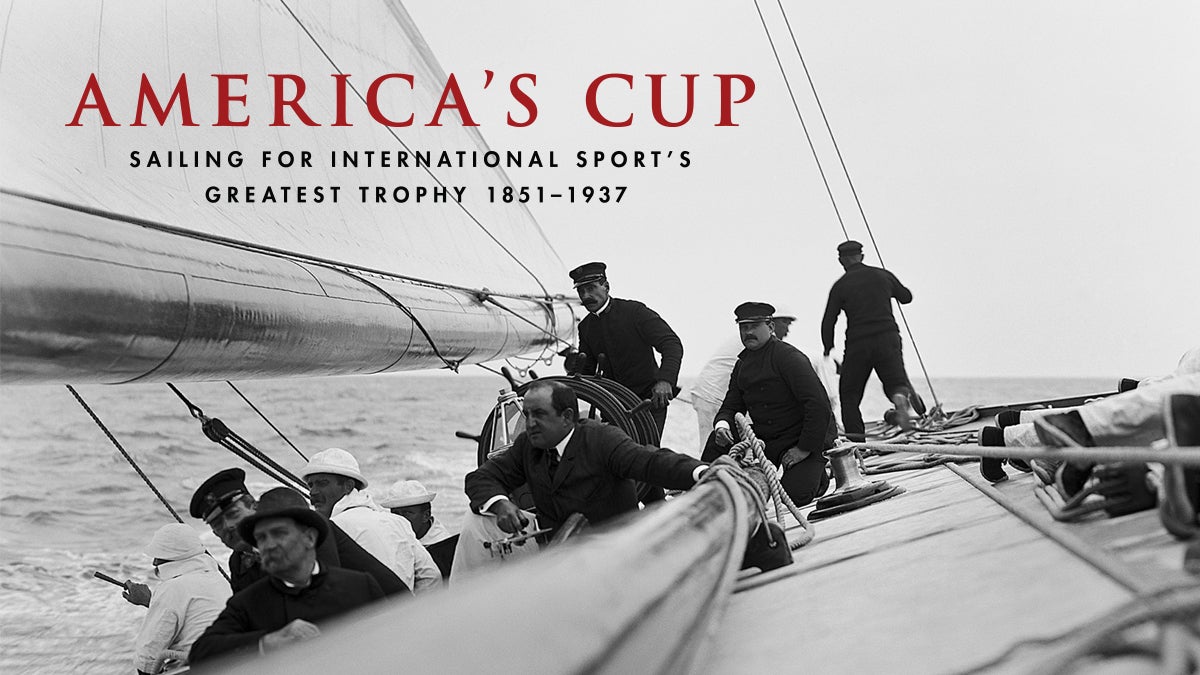
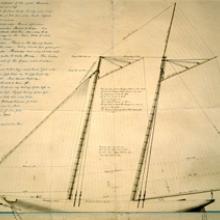
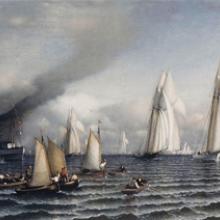
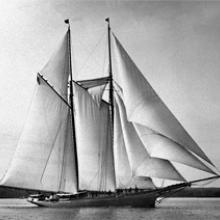
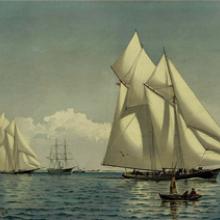
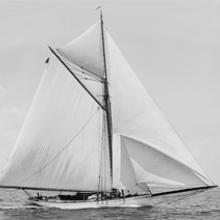
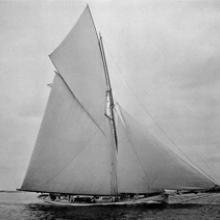
![Mayflower [and] Galatea, the start 1886](/sites/default/files/styles/medium/public/07_americas_cup.jpg?itok=g8e3ReIO)
![Volunteer turning S.H. [i.e. Sandy Hook] Lightship, Sept. 27 1887](/sites/default/files/styles/medium/public/08_americas_cup.jpg?itok=8XANxhzF)
![The start [Vigilant and Valkyrie II] 1893](/sites/default/files/styles/medium/public/09_americas_cup.jpg?itok=DAZpZBmA)
